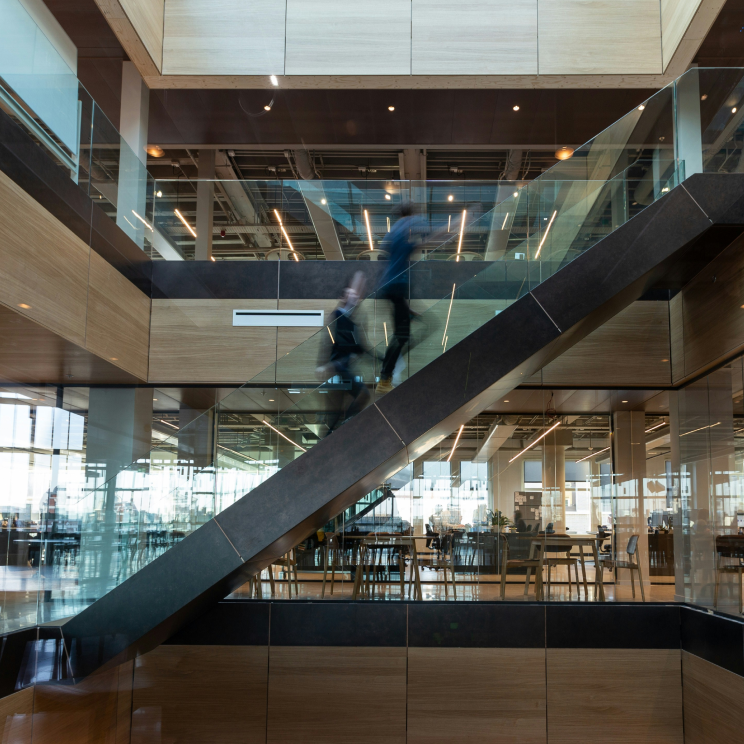In the ever-evolving tech landscape, the integration of Internet of Things (IoT) devices into traditional systems has become a game-changer across various industries. One area where this fusion has immense potential is in building management systems (BMS). Retrofitting IoT into existing BMS can revolutionise the way buildings are managed, offering a host of benefits ranging from enhanced efficiency to improved sustainability. Let's delve into this transformative process and explore the advantages it brings.
Understanding Retrofitting IoT to BMS
Building Management Systems (BMS) have long been the backbone of efficient building operations. They control and monitor crucial functions such as heating, ventilation, air conditioning (HVAC), lighting, security, and more. However, traditional BMS often lack the agility and connectivity required to adapt to modern demands and advancements in technology. But that doesn’t mean you have to scrap it all and start from scratch. This is where retrofitting IoT comes into play.
Retrofitting involves integrating IoT devices such as sensors, actuators, and controllers into the existing BMS infrastructure. These IoT components gather real-time data on various parameters like temperature, humidity, occupancy, energy usage, and air quality, providing insights that enable smarter and more responsive building management

The Benefits of Retrofitting IoT to BMS
1. Enhanced Efficiency
Real-time Monitoring: IoT sensors continuously collect data, allowing for proactive management of building systems. For instance, HVAC systems can adjust heating or cooling based on occupancy levels or outdoor weather conditions, optimising energy usage.
Predictive Maintenance: By analysing data trends, IoT-enabled BMS can predict equipment failures before they occur, enabling preventive maintenance. This not only reduces downtime but also extends the lifespan of assets.
2. Improved Comfort and Productivity
Personalised Environments: IoT sensors can adjust lighting, temperature, and ventilation based on individual preferences and occupancy, creating more comfortable and productive workspaces.
Optimised Indoor Air Quality: Monitoring air quality parameters like Co2 levels enables BMS to adjust ventilation rates, ensuring a healthier indoor environment.
3. Cost Savings
Energy Efficiency: Fine-tuning building operations based on real-time data leads to significant energy savings, resulting in lower utility bills and reduced carbon footprint.
Optimised Resource Allocation: Insights from IoT devices help in identifying areas of resource wastage, allowing for better allocation of resources and cost-effective solutions.
4. Seamless Integration and Scalability
Interoperability: Retrofitting IoT devices into BMS often involves using open protocols and standards, ensuring compatibility with existing systems and future expansions.
Scalability: IoT-enabled BMS architectures are inherently scalable, allowing for the easy addition of new devices and functionalities as requirements evolve.
5. Enhanced Security and Safety
Remote Monitoring and Control: IoT-enabled BMS provides remote access to building systems, enabling facility managers to monitor operations and respond to incidents promptly.
Early Detection of Hazards: Sensors can detect anomalies such as leaks or fire hazards in real-time, triggering immediate alerts and preventive actions.
Real-time Monitoring: IoT sensors continuously collect data, allowing for proactive management of building systems. For instance, HVAC systems can adjust heating or cooling based on occupancy levels or outdoor weather conditions, optimising energy usage.
Challenges and Considerations
While the benefits of retrofitting IoT to BMS are substantial, there can also be challenges that need to be considered.
Integration Complexity: Retrofitting IoT devices requires careful planning and integration to ensure seamless operation with existing BMS.
Data Security and Privacy: With increased connectivity comes the risk of cybersecurity threats and data privacy concerns, necessitating robust security measures.
Cost Considerations: While the long-term benefits are significant, upfront costs for retrofitting and deploying IoT devices need to be carefully evaluated.
The easiest and safest way to mitigate these potential risks when undertaking a project is by partnering with experts, like Origin Smart Controls, to ensure you nail these implementations and minimise your exposure.
Retrofitting IoT to existing Building Management Systems presents a transformative opportunity to optimise building operations, enhance occupant comfort, and drive cost savings. By harnessing the power of real-time data and connectivity, organisations can unlock new levels of efficiency, sustainability, and resilience in their built environments. While challenges exist, the potential benefits far outweigh the obstacles, making IoT retrofitting a compelling investment for the future of facility management.







